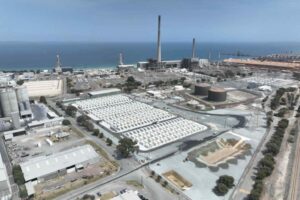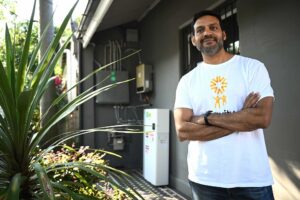Just five years to slash emissions to zero – that is the growing reality check for Australian policy makers if they fail to ratchet up the nation’s climate policies between now and 2030.
That estimate was part of an omnibus report from the Climate Institute on Wednesday, which included new modelling from Climate Analytics that shows that Australia is facing double the environmental and economic costs if average global warming is capped at 2°C, rather than the 1.5°C aspirational target agreed to in Paris.

The Climate Institute says Australia – to meet its fair share of the effort to reach those targets – needs to achieve zero net emissions well before 2050. It needs to have half of its electricity sourced from renewable energy by 2030, and to have coal-fired generation completely phased out by 2035.
Cutting emissions in the electricity sector first, it says, is crucial, because that can then lay the platform for reductions in other sectors, such as transport (more electric vehicles), and building emissions.
“If Australia is to play its part in global efforts to limit warming to 1.5-2°C, a mid-range carbon budget of around nine billion tonnes between 2015-2050 would need to be targeted. Australia would need to achieve net zero emissions well before 2050,” the report says.
“If (Australia) does not update its current 2030 target, to remain within this carbon budget, Australia would need to reduce emissions to zero within around five years after 2030.”
The report is timely because most Australian policy makers are simply refusing to acknowledge the issue. Australia’s electricity emissions are actually rising, rather than falling, yet the federal government shows no interest in putting forward new policies.
Environment and energy minister Josh Frydenberg told RenewEconomy in an interview two weeks ago that next year’s review of climate policies will only be a stocktake. There was no intention, possibly thanks to the power of the Coalition’s right wing, of any increase in targets.
Indeed, at the COAG energy ministers meeting last week, a suggestion that a zero net emissions target should be set was rejected by the ministers. Instead, the ministers appear to have bought the idea that gas is the solution for their electricity ills. And while some Labor ministers raised the prospect of a “gas investment bubble”, it was firmly rejected by the likes of the federal and NSW representatives.
The Climate Institute report is not the only one to hammer home the importance of early action. That has been a constant in just about every climate report that has ever been produced. Next week, a long delayed update by the Climate Change Authority is expected to reinforce its recommendation that Australia aims for a 60 per cent emissions cut by 2030.
The Climate Institute says that if Australia fails to decarbonise its electricity system, the country will only be able to meet the objectives of the Paris Agreement by requiring other economic sectors to reduce emissions more significantly and/or by placing a greater reliance on untested and expensive technologies for carbon sequestration.
If the electricity sector was allowed to meander along its current trajectory, the burden on emissions cuts would then fall on transport and other major carbon emitting sectors. But for those sectors, such as transport, the task would be more difficult without electrification.
These three graphs illustrate the task ahead for Australia. The Coalition government likes to say that its targets for 2030 represent the biggest fall in per capita emissions, but that is only because it is starting so far behind everyone else because of the lack of effort over the past 20 years.
 Indeed, even with the 2030 target achieved, Australia still ranks far higher than most other developed countries, and nearly three times higher than the global per capita emissions target needed to meet the Paris target.
Indeed, even with the 2030 target achieved, Australia still ranks far higher than most other developed countries, and nearly three times higher than the global per capita emissions target needed to meet the Paris target.
The Climate Institute estimates Australia’s share of the “carbon budget” is around 9 billion tonnes. At current rates, it will consume 40 per cent of that from 2020 to 2025. If nothing else changes, it will exhaust its budget by 2035.

That leads to the next graph (above). Australia will need to reduce its emissions to zero well before 2050 – possibly as early as 2040 – if it is to meet those targets. Not even Labor’s 45 per cent reductions proposal by 2030 is ambitious enough.

And so what is Australia’s fair share? Well, in the Climate Institute’s estimate of “high equity” – i.e. Australia playing its fair share and not counting on “negative emissions” and international offsets – Australia would have to reach pretty close to zero emissions by 2025.
If it could access international credits – for around 4 billion tonnes – then it might be able to defer decarbonisation until jut after 2035, and then hope for some “negative emissions” in the years to come.
Simply ignoring the issue won’t make it go away.








